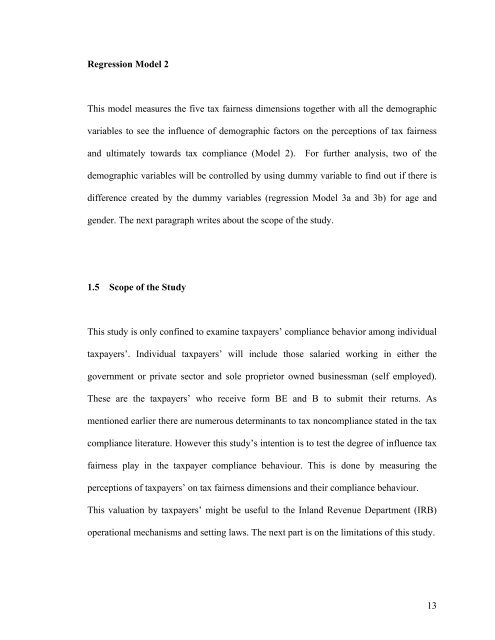1 CHAPTER 1: INTRODUCTION 1.0 Chapter ... - DSpace@UM
1 CHAPTER 1: INTRODUCTION 1.0 Chapter ... - DSpace@UM
1 CHAPTER 1: INTRODUCTION 1.0 Chapter ... - DSpace@UM
Create successful ePaper yourself
Turn your PDF publications into a flip-book with our unique Google optimized e-Paper software.
Regression Model 2This model measures the five tax fairness dimensions together with all the demographicvariables to see the influence of demographic factors on the perceptions of tax fairnessand ultimately towards tax compliance (Model 2). For further analysis, two of thedemographic variables will be controlled by using dummy variable to find out if there isdifference created by the dummy variables (regression Model 3a and 3b) for age andgender. The next paragraph writes about the scope of the study.1.5 Scope of the StudyThis study is only confined to examine taxpayers’ compliance behavior among individualtaxpayers’. Individual taxpayers’ will include those salaried working in either thegovernment or private sector and sole proprietor owned businessman (self employed).These are the taxpayers’ who receive form BE and B to submit their returns. Asmentioned earlier there are numerous determinants to tax noncompliance stated in the taxcompliance literature. However this study’s intention is to test the degree of influence taxfairness play in the taxpayer compliance behaviour. This is done by measuring theperceptions of taxpayers’ on tax fairness dimensions and their compliance behaviour.This valuation by taxpayers’ might be useful to the Inland Revenue Department (IRB)operational mechanisms and setting laws. The next part is on the limitations of this study.13
















